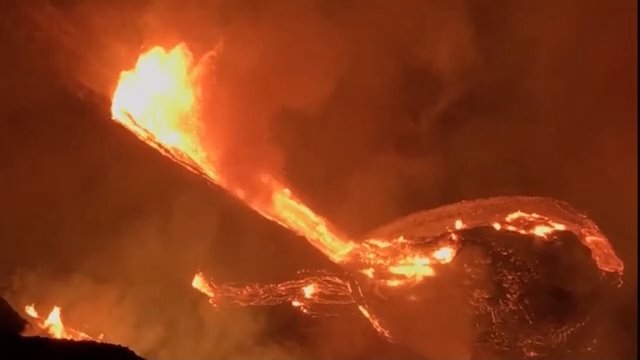Hawaii’s Kilauea volcano began to erupt on the evening of the 20th, causing the water of a lake in the crater of the summit to evaporate. There was also an earthquake after the eruption, but no injuries were caused.
In the first few hours of the volcanic eruption, the magma quickly mixed with the water of the crater lake, generating a large amount of water vapor, and the lake water gradually evaporated. In the night, the sky above the crater turns orange red.
About an hour after the eruption of the volcano, an earthquake of magnitude 4.4 occurred. The U.S. Geological Survey said that the earthquake was not expected to cause serious damage to buildings.
A spokesman for Hawaii Volcanic National Park said that many people drove to the park to watch the spectacle of volcanic eruption, reminding people to abide by epidemic prevention regulations such as wearing masks, and reminding people that volcanic eruptions will produce a large number of harmful substances, including sulfur dioxide gas, which will pose a threat to health.
According to the National Weather Service, the volcanic eruption lasted all day on the 21st, but the eruption is weakening. At present, it is difficult to predict when the eruption will end. Mount Killawea is one of the most active volcanoes in the world, with many eruptions in recent years.



